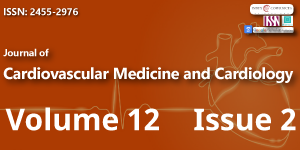An Overview of ECG Artifact Detection in EEG Signals
Main Article Content
Abstract
Abstract
Electroencephalography (EEG) is an important technique for recording brain signals and is particularly used in the diagnosis and treatment of neurological diseases such as epilepsy. However, due to the complex nature of EEG signals, their interpretation is difficult and time-consuming. In EEG recordings, physiological noises such as eye movements (EOG) and electrocardiography (ECG) can affect the signals and hinder accurate diagnosis. This study emphasizes the importance of removing noise from EEG signals, with a focus on the impact of ECG-induced noise. The detection of QRS complexes in the ECG signal plays a critical role in eliminating these noise components from EEG signals. The QRS-complex, a prominent marker of the heart's electrical activity, helps in removing the corresponding noise components from EEG signals. As a result, removing noise from EEG signals is crucial for accurate diagnosis, and it is believed that future studies in this area could develop more precise methods.
Downloads
Article Details
Copyright (c) 2025 Yildirim S.

This work is licensed under a Creative Commons Attribution 4.0 International License.
Hillyard R, Galambos SA. Eye movement artifact in the CNV. Electroencephalogr Clin Neurophysiol. 1970;28(2):173-182. Available from: https://doi.org/10.1016/0013-4694(70)90185-9
Issa MF, Tuboly G, Kozmann G, Juhasz Z. Automatic ECG artefact removal from EEG signals. Meas Sci Rev. 2019;19(3):101-108. Available from: https://www.measurement.sk/2019/msr-2019-0016.pdf
Correa ME, Laciar AG, Patiño E, Valentinuzzi HD. Artifact removal from EEG signals using adaptive filters in cascade. J Phys Conf Ser. 2007;90(1). Available from: https://iopscience.iop.org/article/10.1088/1742-6596/90/1/012081/pdf
Adeli N, Zhou H, Dadmehr Z. Analysis of EEG records in an epileptic patient using wavelet transform. J Neurosci Methods. 2003;123(1):69-87. Available from: https://doi.org/10.1016/S0165-0270(02)00340-0
Berg M, Scherg P. Dipole modelling of eye activity and its application to the removal of eye artefacts from the EEG and MEG. Clin Phys Physiol Meas. 1991;12(A):49. Available from: https://doi.org/10.1088/0143-0815/12/a/010
Shaker MM. EEG waves classifier using wavelet transform and Fourier transform. Brain. 2006;2:3. Available from: https://www.noisebridge.net/images/4/46/DWTandFFTforEEG.pdf
Shoka A, Dessouky A, El-Sherbeny M, El-Sayed A. Literature review on EEG preprocessing, feature extraction, and classifications techniques. Menoufia J Electron Eng Res. 2019;28(1):292-299. Available from: https://dx.doi.org/10.21608/mjeer.2019.64927
Urigüen B, Garcia-Zapirain JA. EEG artifact removal—state-of-the-art and guidelines. J Neural Eng. 2015;12(3):31001. Available from: https://doi.org/10.1088/1741-2560/12/3/031001
Anderer B, Roberts P, Schlögl A, Gruber G, Klösch G, Herrmann W, et al. Artifact processing in computerized analysis of sleep EEG—a review. Neuropsychobiology. 1999;40(3):150-157. Available from: https://doi.org/10.1159/000026613
Kalyakulina AI, Yusipov II, Moskalenko VA, Nikolskiy AV, Kosonogov KA, Osipov GV. LUDB: A new open-access validation tool for electrocardiogram delineation algorithms. IEEE Access. 2020;8:186181-186190. Available from: https://ieeexplore.ieee.org/document/9214911
Dora C, Biswal PK. Correlation-based ECG artifact correction from single channel EEG using modified variational mode decomposition. Comput Methods Programs Biomed. 2020;183:105092. Available from: https://doi.org/10.1016/j.cmpb.2019.105092
Bajpai S, Kumar Moolchandani H, Sahu M, Mohdiwale S. Artifacts removal in EEG data. 2018.
Gülbay BE. Artefakt kayıtları ve skorlam hataları. Solunum. 2013;15(3):180-183.
Goldberger AL, Amaral LAN, Glass L, Hausdorff JM, Ivanov Pl Ch, Mark RG, et al. PhysioBank, PhysioToolkit, and PhysioNet: components of a new research resource for complex physiologic signals. Circulation. 2000;101(23). Available from: https://www.ahajournals.org/doi/10.1161/01.cir.101.23.e215
Yildirim S, Kocer HE, Ekmekci A. Research on brain signals via artificial neural network and swarm intelligence algorithms. Int J Appl Math Electron Comput. 2019;7(2):27-37. Available from: http://dx.doi.org/10.18100/ijamec.475090
Drahansky M, et al. Deep learning algorithms for efficient analysis of ECG signals to detect heart disorders. Biosignal Process. 2022;13.
Rathore D, Choudhary N. An overview of ECG signal preprocessing and feature extraction for cardiac health monitoring. Int J Eng Appl Sci Manag. 2025;5(12):February.
Abagaro AM, Barki H, Ayana G, Dawud AA, Thamineni BL, Jemal T, et al. Automated ECG signals analysis for cardiac abnormality detection and classification. J Electr Eng Technol. 2024;19(5):3355-3371. Available from: https://link.springer.com/article/10.1007/s42835-024-01902-y





